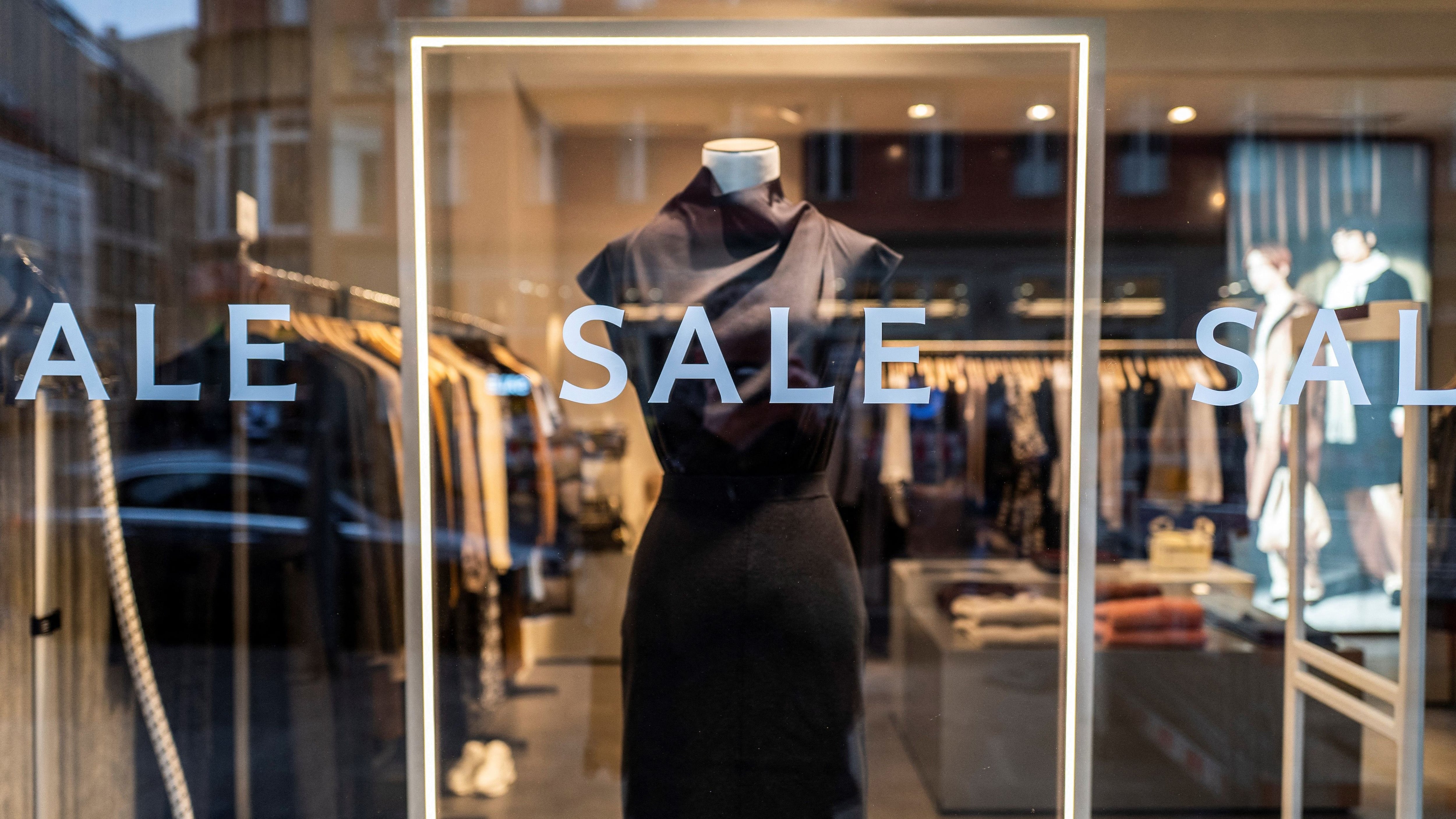Why Fashion Can’t Escape the Discount Cycle
KEY INSIGHTS
- After a year of pricing discipline, promotions in the second week of January were higher and deeper compared to 2019 levels, according to Edited
- One reason for the uptick: inventory allocated for the holiday season arrived late
- Analysts say it’s likely that sales may stick around as demand for apparel is likely to soften
They’re back.
After a year where American fashion retailers appeared to have finally kicked their habit of relying on discounts to drive sales, shoppers are once again being greeted with 50 percent off signs in stores and a flood of promotions in their inboxes.
By some measures, the sales are even deeper now than they were before the pandemic. In the second week of January, 44 percent of apparel products were on discount, up from 35 percent in the same period in 2019, according to the retail intelligence firm Edited. The markdowns are deeper too, with an average 41 percent off, compared with 36 percent three years ago.
Experts offer a few reasons for the sudden return of sales: a number of retailers received late shipments that missed the holiday season, which they must now dispose of in January, when consumers are less inclined to open their wallets. The Omicron variant may also have caused a dip in consumer spending.
Both of those factors are likely temporary, meaning the January sales could be a blip for retailers that adopted leaner merchandising strategies during the pandemic.
“By the time we get rid of the excess Q4 products and after the [Omicron] slowdown, we’ll see a continuation of smarter markdowns,” said Juliana Prather, chief marketing officer at Edited. “Not a single brand or executive said they intend on promoting more in 2022 than last year.”
Others see the recent spate of winter sales as a first step down the slippery slope back to year-round discounting and desperate end-of-season promotions. Both tactics were a cornerstone of many American mass retailers’ strategy to compete against new digital competitors and fast fashion brands. Those rivals are still a threat, and the reflex to use promotions to boost revenue still exists within many companies.
We get to see which brands actually became healthier from the pandemic and which simply rode the wave.
“It won’t be an onslaught but rather a gradual build, and as soon as consumers see promotions, they’ll get picky,” said Simeon Siegel, retail analyst at BMO Capital Markets. “That’s when we get to see which brands actually became healthier from the pandemic and which simply rode the wave.”
Siegel notes in a recent report that Gap and Nordstrom are among retailers offering deeper year-over-year promotions right now, while Kate Spade, The RealReal, American Eagle Outfitters and Victoria’s Secret’s Pink brand are putting fewer products on sale.
Complicating retailers’ pricing plans is a wave of apparel imports that is just reaching US shores. Apparel imports increased 5 percent in September compared to the same period in 2019, 12 percent in October and 33 percent in November, according to data from the Office of Textiles and Apparel compiled by Morgan Stanley. Before the pandemic, the average rise in apparel imports was 1 percent.
“This is concerning, in our view, as high inventory levels coupled with slightly slower demand compared to 2021 could trigger a rise in promotional levels,” wrote Morgan Stanley analyst Kimberly Greenberger in a note published Jan. 18. Greenberger downgraded Gap Inc. in her report, citing speciality retail as particularly vulnerable to these trends.
Another wild card is inflation. Apparel costs rose 6 percent last year, according to the consumer price index (CPI) published by the US Bureau of Labor Statistics, slightly below the 7 percent average for all goods and services — the highest annual increase in 40 years. If prices continue to hover above what customers are used to paying, experts predict they may be less likely to spend as much in 2022 as they did in 2021.
Morgan Stanley projected that the personal consumption expenditures price index, or PCE, a metric that measures the price of goods people pay for, will likely decelerate in 2022. PCE growth will decrease from 12.2 percent year-over-year in 2021 to just north of 7 percent in 2022 and 5 percent in 2023, the bank said.
“We’re starting to see inflation bite and consumers starting to respond to that,” said Neil Saunders, managing director of GlobalData. “Clothing is especially negative because it’s a discretionary category where people will cut back in tougher times.”
We’re starting to see inflation bite and consumers starting to respond to that.
And as the economy continues to grow, there will be a shift in consumer spending from goods toward services, such as entertainment and dining out. This is because during the pandemic, spending dramatically shifted from the norm: spending on products grew while spending on services dipped.
“But since 2021, when the world began to reopen post-pandemic, wallet shares have begun to shift back to their pre-Covid relationship, with services share increasing,” Greenberger wrote.
Greenberger pointed to the off-price sector as the potential winner in 2022 because stores like TJ Maxx will benefit from the overall glut of supply. She said she’s most cautious about department stores and mall-based specialty retailers, which saw their margins slip year after year prior to the pandemic.
“2021 was the absolute best time for retail,” Siegel said. “We’ve left all that greatness, and now’s when the winners and losers will emerge.”

:quality(70)/cloudfront-eu-central-1.images.arcpublishing.com/businessoffashion/G6MAQW27HNGIRD72TEBXELNIRE.jpg)

:quality(70):focal(631x291:641x301)/cloudfront-eu-central-1.images.arcpublishing.com/businessoffashion/4LK7EJLOXJDWBPDREWCNTSRZ5Y.jpg)


